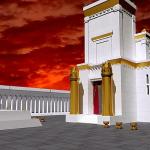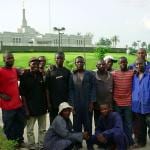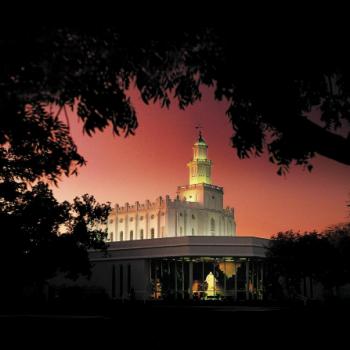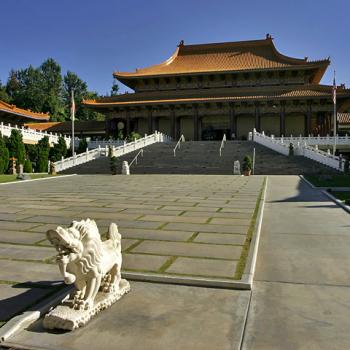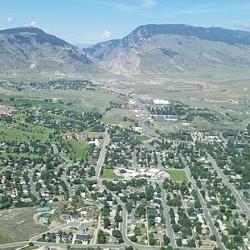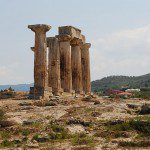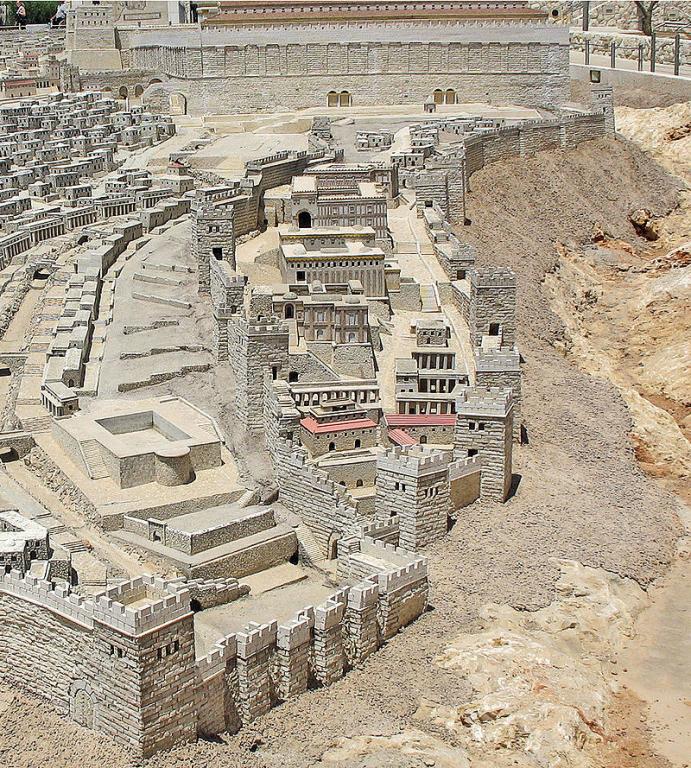
(Wikimedia Commons public domain image)
Up new, today, on the website of the Interpreter Foundation:
““Encircled About Eternally in the Arms of His Love”: The Divine Embrace as a Thematic Symbol of Jesus Christ and His Atonement in the Book of Mormon,” written by Matthew L. Bowen
Abstract: This study builds upon Hugh Nibley’s insightful observation that several Book of Mormon passages reflect “the ritual embrace that consummates the final escape from death in the Egyptian funerary texts and reliefs” as expressing the meaning of Christ’s Atonement. This study further extends Nibley’s observations on Jacob’s “wrestle” as a divine “embrace” to show that Lehi’s, Nephi’s, and their successors’ understanding of the divine embrace is informed by their ancestor’s “wrestle” with a “man” (Genesis 32:24–30) and reconciliation with his brother (Genesis 33:4–10). Examples of the divine embrace language and imagery throughout the Book of Mormon go well beyond what Nibley noted, evoking the Psalms’ depictions of Jehovah whose “wings” offered protection in the ritual place of atonement. Book of Mormon “divine embrace” texts have much to teach us about Jesus Christ, his love, the nature of his Atonement, and the temple.
“Interpreting Interpreter: A Divine Embrace,” written by Kyler Rasmussen
This post is a summary of the article ““Encircled About Eternally in the Arms of His Love”: The Divine Embrace as a Thematic Symbol of Jesus Christ and His Atonement in the Book of Mormon” by Matthew L. Bowen in Volume 59 of Interpreter: A Journal of Latter-day Saint Faith and Scholarship. All of the articles may be seen at https://interpreterfoundation.org/category/summaries/. An introduction to the Interpreting Interpreter series is available at https://interpreterfoundation.org/interpreting-interpreter-on-abstracting-thought/.
The Takeaway: Bowen provides examples in the Book of Mormon that evoke the concept of a divine embrace, reflecting similar examples in the Old Testament and reinforcing Christ’s power to encircle us in his love via the Atonement.
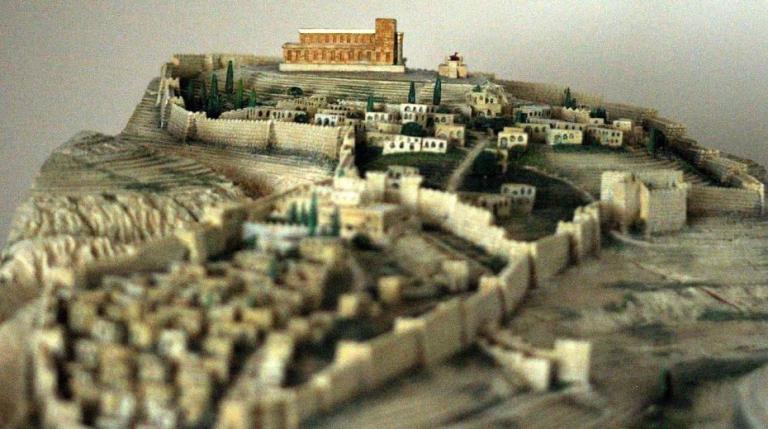
I want to share a couple of passages from Eric H. Cline, Biblical Archaeology: A Very Short Introduction (Oxford and New York: Oxford University Press, 2009). Once again, political developments influenced archaeology. In particular, after the so-called Six Day War of 1967, in which Israeli occupied the Sinai, the West Bank (including East Jerusalem), and the Golan Heights, vast new areas were open to archaeological surveys and excavation. For my purposes here, Jerusalem is of particular interest — and not merely because, had things gone according to plan, we would have been there until yesterday:
It was also clear that the population of the Southern Kingdom of Judah increased dramatically in the final decades of the eighth century BCE, probably as a result of refugees pouring in from the Northern Kingdom as the Neo-Assyrians invaded. (52)
Readers of the Book of Mormon, of course, will remember that Lehi and his family were members of the Northern Israelite tribe of Manasseh (Alma 10:3), which, with other considerations, suggests that Lehi or his near forebears might themselves have been among those refugees fleeing the Northern Kingdom ahead of the Neo-Babylonian invasion, which came across from the top of Mesopotamia and, thereafter, from the north.
The subsequent demolition and construction projects in the city enabled Israeli archaeologists to make important discoveries as they excavated in areas that had previously been inaccessible to them. In particular, the new excavations indicated that there had been substantial new development and construction in the city of Jerusalem in the last few decades of the eighth century BCE. The population of the city seems to have jumped from one thousand to about fifteen thousand inhabitants during this period, and the entire region went from a sleep backwater to an important part of the ancient Near East in a very short span of time, again probably as a result of refugees arriving from the Northern Kingdom between 734 and 720 BCE. (52)
And, unsurprisingly, archaeological evidence for the Neo-Babylonian siege of Jerusalem, and for the city’s destruction and conquest — in anticipation of which Lehi and his family abandoned their home and fled into the wilderness — has also been discovered by researchers there:
Working in the Jewish Quarter of Jerusalem as well as by the Temple Mount and in the City of David, archaeologists such as Nahman Avigad and Benjamin Mazar uncovered evidence of tremendous destruction in the city during the early sixth century BCE. They found ash and debris piled high, and blocks of stone that once supported buildings lying about torn and broken. In the debris, they found arrowheads of a type specifically used by the Neo-Babylonians in the sixth century BCE. These findings confirmed the brief accounts given in the Hebrew Bible (2 Kings 24-25; 2 Chron. 36; Jer. 39, 52; Ezek. 4), and the longer and more dramatic account written centuries after the event by Flavius Josephus (Josephus, Antiquities of the Jews 10.7.108-10.8.154), concerning the destruction of Jerusalem by Nebuchadnezzar and the Neo-Babylonians in 586 BCE.
Intriguingly, the archaeologists found several ancient toilets whose contents they were able to examine under a microscope. The microscopic analysis revealed that the inhabitants had been eating so-called “backyard plants” — mustard, radishes, cabbage, parsley, coriander, and the like. Some had suffered from tapeworm and whipworm, intestinal parasites that are acquired as a result of unsanitary and unhygienic conditions and practices — such as using human manure as fertilizer, not having enough water for thorough rinsing, and not having enough fuel to cook meat thoroughly. Archaeologists studying the data suggested that the inhabitants were under some sort of environmental stress. The eighteen-month-long siege and subsequent destruction of the city by the Neo-Babylonians in 586 BCE, as reflected in the Hebrew Bible (Lam. 2:20, 4:4, 4:10; Ezek. 5:10-17), seems the obvious culprit. (52-53)
By the way, the current walls of the Old City of Jerusalem have absolutely nothing to do with the walls of the biblical city in any of its periods. They were constructed in the first part of the sixteenth century, by order of the Ottoman Sultan Süleyman the Magnificent. However, a relatively small segment of Hezekiah’s wall, the wall that Lehi and Nephi would have known, has now been uncovered and is visible in the Old City’s Jewish Quarter. It’s one of my favorite things to point out to our tours when we walk through the city.


